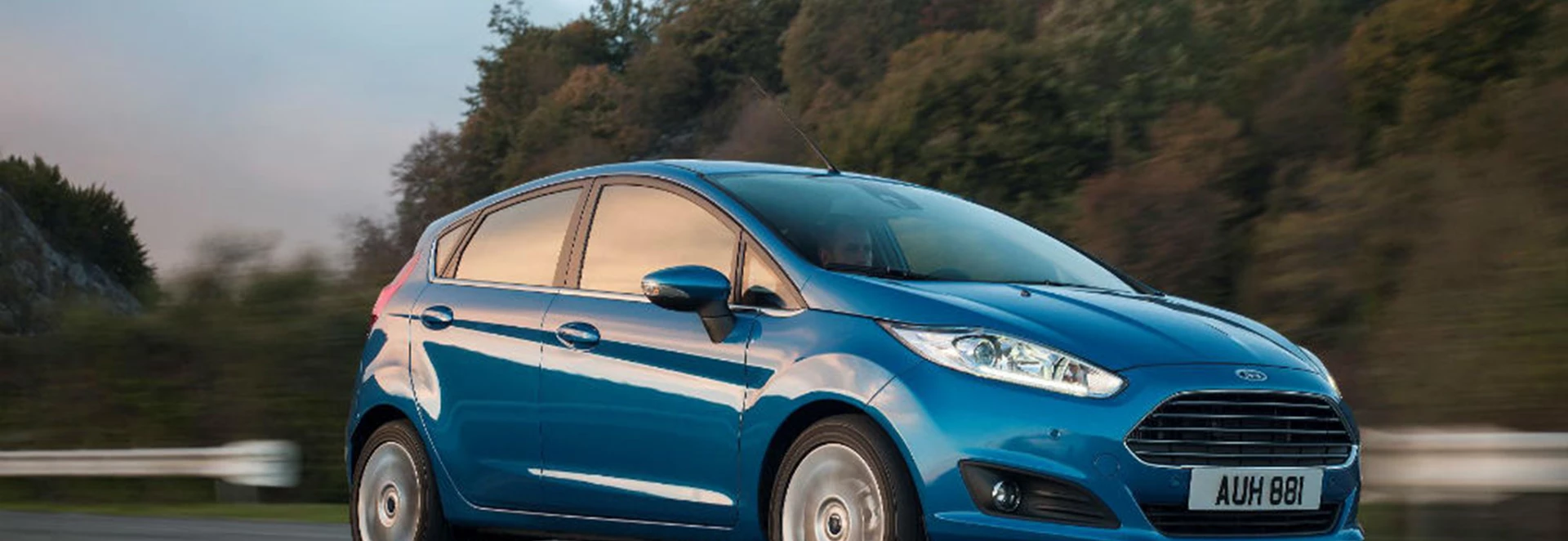Introduction The Ford Fiesta supermini has been the UK’s best selling new car for several years in a row now and it’s not hard to see why. Not keen to rest on its laurels, Ford has committed to giving the Fiesta frequent and significant updates on a regular basis. The last major update came for the Fiesta in time for the start of 2013. For this year the Fiesta received a facelift, complete with Ford’s new trademark trapezoidal chrome grille. A series of new safety and luxury technologies have also been added for good measure. Since the start of this year the Ford Fiesta has also benefitted from the arrival of the award-winning 1.0-litre EcoBoost petrol engine to the range. Today the Fiesta faces many tough competitors, including the Peugeot 208, Vauxhall Corsa and the latest Renault Clio. As strong as certain rivals are though, the latest Fiesta undoubtedly looks modern and stylish and it is very competitively priced. These two strengths will particularly attract to younger car buyers. Available in three or five-door specifications, the Ford Fiesta starts from just £9,995 for the basic Studio trim. Prices increase all the way to £17,545 for the diesel-powered Titanium X trim model. Performance 4/5 The latest Ford Fiesta engine range includes six petrol options and three diesels. The three diesels include a 74bhp 1.5-litre TDCi and two 1.6-litre TDCi units with 94bhp, including an ECOnetic version with fuel-saving start-stop engine technology. In the petrol line-up there’s a basic 1.25-litre unit offering outputs of 59bhp and 81bhp. There’s also a 104bhp 1.6-litre unit linked with a six-speed Powershift automatic gearbox rather than the standard five-speed manual box. Also available for the Fiesta is the turbocharged 1.0-litre EcoBoost petrol with outputs of 99bhp or 123bhp. Twice winner of the International Engine of the Year award, the EcoBoost also features start-stop engine technology as standard. We tested the 123bhp 1.0-litre EcoBoost which is strong and inspires confidence. With this unit the Fiesta can go from a standstill to 62mph in 9.4 seconds and reach a top speed of 122mph. The EcoBoost engine provides easy smooth running in the Fiesta, but it can also unlock a feistier streak which is great for tackling slopes and the motorway. Ride and handling 5/5 The Ford Fiesta simply excels when it comes to the quality of the driving experience. Whichever engine you choose the Fiesta feels agile and easy to drive. The light and responsive steering makes driving in town a doddle. The combination of high grip and minimal body roll is enjoyable on more twisty and challenging roads in the countryside. Rivals have always found it tough to match the Fiesta’s driving capabilities and the latest model keeps the benchmark high. Equipment 4/5 There are many trim levels to choose for the Ford Fiesta and equipment levels range from minimalistic to plentiful. The basic ‘Studio’ trim doesn’t offer much, though a CD/radio player, front electric windows and heated mirrors are included as standard. Other trim levels include ‘Style’, ‘Zetec’, ‘Zetec S’, ‘Titanium’ and ‘Titanium X’. You’ll need to go for at least the Zetec model to get air conditioning and alloy wheels as standard. Since its facelift, Fiesta models from Zetec S onwards now also include Ford’s SYNC technology with Emergency Assist. Ford SYNC supports voice control for Bluetooth and other onboard gadgets. The Fiesta is also backed by MyKEY technology which allows parents to set speed and music volume restrictions for younger drivers. Higher up the range the Titanium and Titanium X models are well equipped - with the latter including LED daytime running lights, rain-sensing wipers and heated front seats. Practicality 4.5/5 The seating in the Ford Fiesta is comfy and well positioned and legroom is decent all-round, particularly up front. Headroom could prove restrictive, however, for taller adults in the back. Looking behind, the Fiesta’s rear window may not offer as much visibility as you would expect. This is unlikely to pose many problems though, particularly if you have the £300 optional parking sensors. The cabin is professionally presented and very well refined. Also impressing are the high quality speakers for the sound system. When it comes to practicality, the Fiesta fares well. It offers 290 litres boot space with the rear seats up, that’s a little more than the Vauxhall Corsa and the Peugeot 208 (both 285 litres). It beats numerous other rivals as well like the Volkswagen Polo (280 litres). However, some rivals like the Renault Clio (300 litres) and the Seat Ibiza (292 litres) do offer a little more space. Running costs 5/5 All Fiesta engines come with enjoyable low running costs – particularly eye-catching is the 1.0-litre petrol unit which return just 99g/km in CO2. They also record a combined fuel economy of 65.7mpg.Another boon is that all of the Fiesta’s diesel units return CO2 emissions under 99g/km, with the 1.6-litre ECOnetic unit recording a staggering 85.6mpg when it comes to average fuel economy. Virtually every other current supermini on the market offers at least one low emission engine but very few can match the Fiesta for maximum potential fuel economy. Motortorque Verdict 5/5 The Ford Fiesta is an enjoyable supermini which blends in efficiency, practicality and good driving into one trendy-looking package. While it is not the most practical in its class, it is still highly suited in the role of a small family car. Behind the wheel, it’s easy to drive and at the same time entertaining, which is why it remains so popular.

Our Rating



